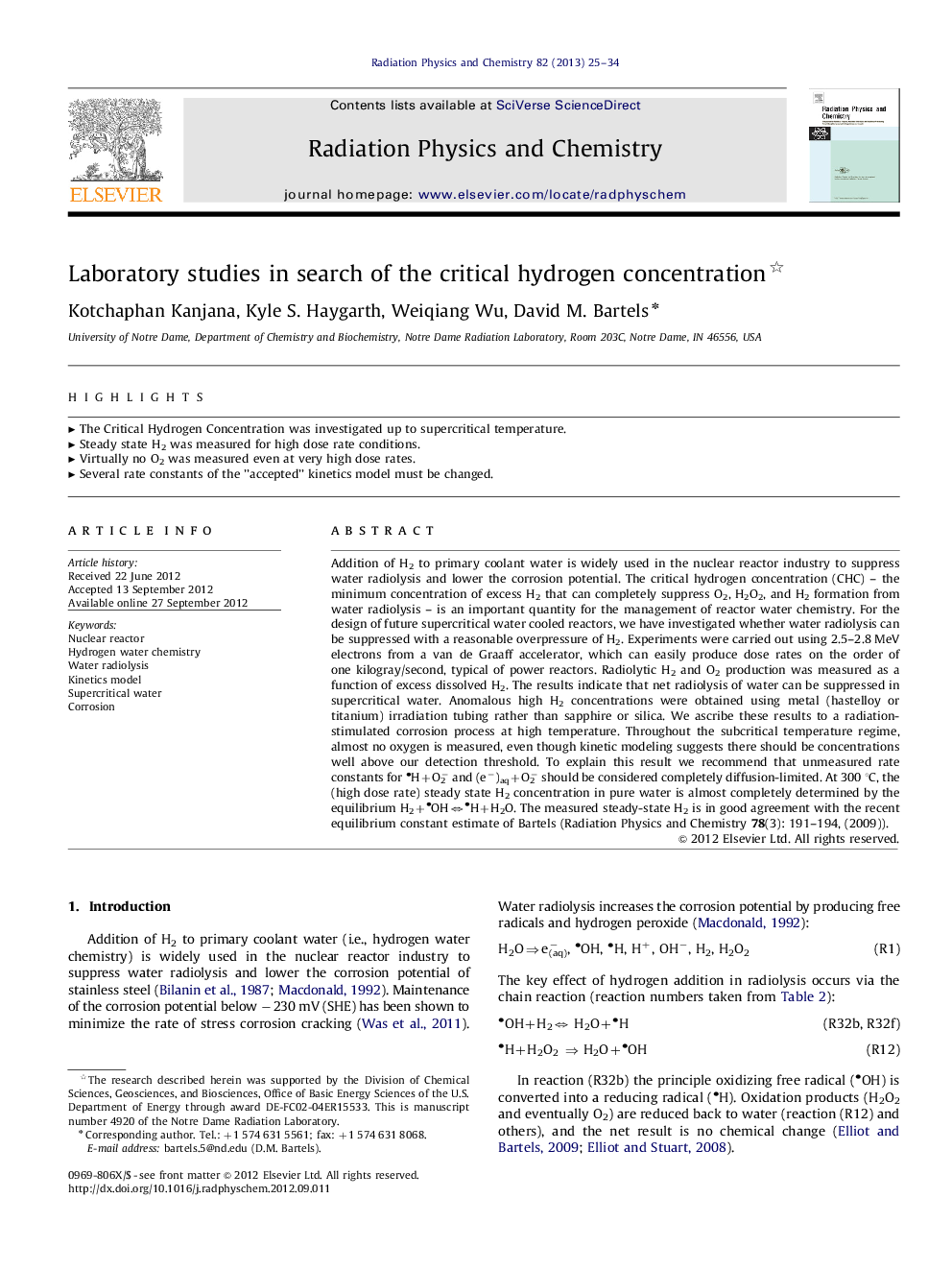| کد مقاله | کد نشریه | سال انتشار | مقاله انگلیسی | نسخه تمام متن |
|---|---|---|---|---|
| 1891519 | 1533542 | 2013 | 10 صفحه PDF | دانلود رایگان |

Addition of H2 to primary coolant water is widely used in the nuclear reactor industry to suppress water radiolysis and lower the corrosion potential. The critical hydrogen concentration (CHC) – the minimum concentration of excess H2 that can completely suppress O2, H2O2, and H2 formation from water radiolysis – is an important quantity for the management of reactor water chemistry. For the design of future supercritical water cooled reactors, we have investigated whether water radiolysis can be suppressed with a reasonable overpressure of H2. Experiments were carried out using 2.5–2.8 MeV electrons from a van de Graaff accelerator, which can easily produce dose rates on the order of one kilogray/second, typical of power reactors. Radiolytic H2 and O2 production was measured as a function of excess dissolved H2. The results indicate that net radiolysis of water can be suppressed in supercritical water. Anomalous high H2 concentrations were obtained using metal (hastelloy or titanium) irradiation tubing rather than sapphire or silica. We ascribe these results to a radiation-stimulated corrosion process at high temperature. Throughout the subcritical temperature regime, almost no oxygen is measured, even though kinetic modeling suggests there should be concentrations well above our detection threshold. To explain this result we recommend that unmeasured rate constants for
• H+O2− and (e−)aq+O2− should be considered completely diffusion-limited. At 300 °C, the (high dose rate) steady state H2 concentration in pure water is almost completely determined by the equilibrium H2+
• OH⇔
• H+H2O. The measured steady-state H2 is in good agreement with the recent equilibrium constant estimate of Bartels (Radiation Physics and Chemistry 78(3): 191–194, (2009)).
► The Critical Hydrogen Concentration was investigated up to supercritical temperature.
► Steady state H2 was measured for high dose rate conditions.
► Virtually no O2 was measured even at very high dose rates.
► Several rate constants of the "accepted" kinetics model must be changed.
Journal: Radiation Physics and Chemistry - Volume 82, January 2013, Pages 25–34